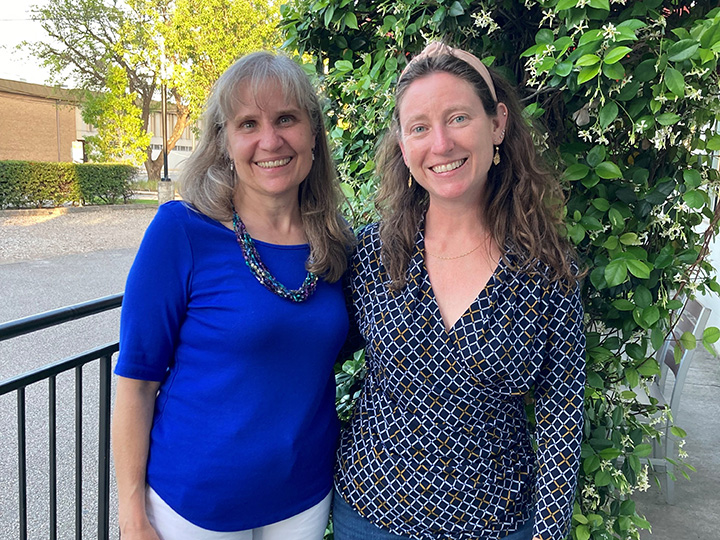
Peggy Blake, professor and department chair in Communication Sciences and Disorders (COMD), is partnering with Tatiana Schnur from Baylor College of Medicine to research the right side of stroke survivors’ brains to gain insight into communication abilities and theory of mind. The work is funded by a $3.37 million Research Project Grant (R01) from the National Institute on Deafness and Other Communication Disorders of the National Institutes of Health (NIH).
Pilot testing has already indicated that acute stroke patients have a deficiency to distinguish what others are thinking or feeling, Blake noted. Without this ability, conversation is based solely on your knowledge and your feelings, and it disrupts communication.
“Theory of mind means recognizing that someone else has thoughts, abilities, knowledge, emotions, etc., and theirs may be different than yours. It can be impaired in autism and also by stroke,” said Blake, co-principal investigator of the project titled “Recovery of language and theory of mind after stroke.”
The project examines how cognitive abilities impact the recovery of language in individuals during stages of stroke. Results will provide a novel strategy for the treatment of communicative difficulties following a right hemisphere stroke and will impact understanding of brain pathology.
“The right side of the brain is more responsible for understanding someone’s intent,
what they mean to say and what they are trying to communicate, which can be very different
from the words that they use,” Blake said. “The most obvious examples are sarcasm
and humor, but we also have nonverbal cues, figurative language and intonation that
are used as forms of expression.”
The project will examine communication abilities and test individuals over the span
of a year to see how they develop and change as they heal. Brain imaging will be used
throughout the project. Research will be centered on areas of the brain critical for
theory of mind functions, noting how our ability to understand other people changes
during stroke recovery and alters everyday language and communication.
“Assessing these abilities over time while collecting neural information will enable us to identify patterns of co-occurrence to gain predictive power about what types of brain damage and behavior lead to chronic communicative loss,” said Schnur, co-principal investigator. “As a result, we will be able to provide a clear path to improved diagnosis and treatment of communicative difficulties following right hemisphere stroke.”
The R01 provides support for health-related research and development through funding and opportunities for involvement with programs, centers and studies consistently evolving. It is the oldest grant provided by the NIH and marks a milestone for progression in the world of academia. The study will run through 2027.
Funds will be used to pay participants, a speech language pathologist and a patient coordinator as well as for testing and any assistance needed to manage the project. The grant is interwoven with multiple medical institutions such as the Texas Medical Center, Methodist Research Institute, Memorial Hermann Hospital and the Baylor affiliated hospital of St. Luke’s.
“We want to see how communication spontaneously recover, just as a brain recovers from a stroke, and also if a theory of mind problem usually comes with anything else,” Blake said. “Are there other difficulties or patterns that go along with it?”
By increasing awareness of communication deficits for stroke survivors, the team hopes to deepen understanding of right-hemisphere strokes, which are often classified as mild and under researched.
“I want to accomplish a greater understanding of the right side of the brain’s involvement in communication to lead to better assessment and treatment,” Schnur said. Hopefully, this leads to “a clear path to improved diagnosis and treatment of communicative difficulties following right hemisphere stroke.”